Refresher/Summary:
- Calcium is one of the hardest vitamins to get on a vegan diet.
- Adults should try and get at least 1,000 mg of calcium per day.
- The best plant based sources of calcium are seeds and dark leafy greens.
If you have a serious calcium deficiency, it can lead to weaker bones and diseases like osteoporosis (1).
Due to advertising growing up, we think of animal products like dairy as amazing sources of calcium.
In reality, dairy is an okay source of calcium but nothing special. And while some effort is needed, most vegans can get enough calcium in their diet from food sources.
If you’re having trouble getting enough, you can also use a vegan calcium supplement. Here’s a guide to the best vegan calcium supplements.
Table of Contents
How Much Calcium Do You Need?
For adults, either men or women, the recommended daily intake of calcium is 1,000 mg (2).
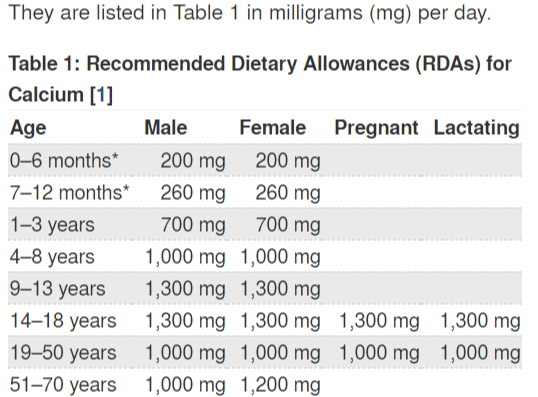 Calcium is one of the most important minerals in the diet.
Calcium is one of the most important minerals in the diet.
Getting too much or too little can lead to kidney stones in vegans or non-vegans alike.
Vegan Foods Highest in Calcium Per Gram and Calorie
Getting right into it, I’ve compiled a huge list of vegan foods, and created a table below of the foods in terms of their calcium content.
The data comes from the USDA Food Composition Database.
I’ve avoided processed and fortified foods, focusing just on whole plant-based foods, but you likely get some extra in your non-dairy milk, cereal, or bread as well. Tofu also has a lot since it’s usually packaged with a calcium solution.
| Food | Calcium (mg) per 100 grams | Calcium (mg) per 100 calories |
|---|---|---|
| Sesame seeds | 975 | 170 |
| Chia seeds | 630 | 129 |
| Almonds | 269 | 46 |
| Flaxseed | 257 | 48 |
| Kale | 255 | 713 |
| Collard greens | 232 | 788 |
| Turnip greens | 189 | 578 |
| Garlic | 167 | 125 |
| Arugula | 160 | 640 |
| Brazil nut | 159 | 24 |
| Soybeans | 145 | 103 |
| Vital wheat gluten | 142 | 38 |
| Cowpeas | 128 | 132 |
| Watercress | 120 | 1000 |
| Mustard greens | 114 | 427 |
| Seaweed (dried) | 114 | 40 |
| Hazelnut | 114 | 18 |
| Rapini | 108 | 490 |
| Bok choy | 106 | 822 |
| Pistachio nuts | 106 | 19 |
| Spinach | 99 | 432 |
| Walnut | 97 | 15 |
| Peanuts | 92 | 16 |
| Olive | 88 | 74 |
| Macadamia nut | 85 | 12 |
| Okra | 82 | 252 |
| Sunflower seeds | 79 | 13 |
| Water spinach | 77 | 391 |
| Pecans | 71 | 10 |
| Hemp seeds | 70 | 13 |
| Navy beans | 69 | 49 |
| Date | 64 | 23 |
| Leek | 60 | 98 |
| Pumpkin seeds | 55 | 12 |
| Oats | 54 | 14 |
| Swiss chard | 51 | 269 |
| Chickpeas | 49 | 30 |
| Broccoli | 47 | 139 |
| Amaranth | 47 | 46 |
| Cashew | 45 | 8 |
| Lotus root | 45 | 61 |
| Artichoke | 44 | 93 |
| Orange | 43 | 94 |
| Chicory root | 42 | 58 |
| Celery | 41 | 289 |
| Cabbage | 40 | 164 |
| Tangerine | 37 | 69 |
| Green bean | 36 | 118 |
| Parsnip | 36 | 48 |
| Brussels sprouts | 36 | 100 |
| Fava bean | 36 | 33 |
| Fig | 35 | 47 |
| Carrot | 33 | 80 |
| Lettuce (red leaf) | 33 | 255 |
| Wheat flour (whole-grain) | 33 | 10 |
| Lime | 33 | 110 |
| Lima beans | 32 | 26 |
| Sweet potato | 30 | 35 |
| Chestnut | 29 | 12 |
| Napa cabbage | 29 | 246 |
| Blackberry | 29 | 68 |
| Kidney beans | 28 | 22 |
| Adzuki beans | 28 | 22 |
| Mung bean | 27 | 26 |
| Black beans | 27 | 20 |
| Raspberry | 26 | 50 |
| Lemon | 26 | 88 |
| Peas | 25 | 31 |
| Rye grain | 24 | 7 |
| Jackfruit | 24 | 25 |
| Asparagus | 23 | 108 |
| Onion | 23 | 57 |
| Cauliflower | 22 | 89 |
| Radish | 22 | 133 |
| Gourd | 20 | 100 |
| Lentils | 19 | 17 |
| Guava | 18 | 27 |
| Buckwheat groats | 17 | 5 |
| Quinoa | 17 | 14 |
| Pine nuts | 16 | 2 |
| Cassava | 16 | 10 |
| Zucchini | 16 | 95 |
| Beets | 16 | 36 |
| Cucumber | 16 | 104 |
| Strawberry | 16 | 50 |
| Squash | 15 | 92 |
| Coconut meat | 14 | 4 |
| Avocado | 13 | 8 |
| Pineapple | 13 | 26 |
| Cherry | 13 | 21 |
| Apricot | 13 | 27 |
| Grapefruit | 12 | 32 |
| Bamboo shoot | 12 | 100 |
| Mango | 11 | 18 |
| Barley | 11 | 9 |
| Grapes | 10 | 15 |
| Rice | 10 | 8 |
| Tomato | 10 | 55 |
| Green bell pepper | 10 | 48 |
| Pear | 9 | 16 |
| White potato | 9 | 13 |
| Eggplant | 9 | 36 |
| Cantaloupe | 9 | 26 |
| Farro | 9 | 10 |
| Cranberry | 8 | 17 |
| Red bell pepper | 7 | 26 |
| Plum | 6 | 13 |
| Melon | 6 | 17 |
| Peach | 6 | 16 |
| Durian | 6 | 4 |
| Apple | 6 | 11 |
| Nectarine | 6 | 13 |
| Banana | 5 | 6 |
| Mushrooms | 4 | 14 |
| Lychee | 4 | 6 |
| Pummelo | 4 | 10 |
| Plantain | 3 | 2 |
| Corn | 2 | 2 |
| Ginger | 0 | 0 |
The “per 100 grams” column is the most practical, while the “per 100 calories” column can be useful if you’re trying to lose weight and are watching your calorie intake.
Seeds are a great plant-based source of calcium as long as you’re not heavily limiting your calorie intake, while leafy greens like spinach are the best vegan sources of calcium if you are watching your calories.
The Most Efficient Plant Sources of Calcium
Here’s one more way to look at the data in the table above.
I’ve graphed the amount of calcium per 100 calories against the amount per 100 grams of the very best sources.
The most efficient sources are those foods somewhere in the middle of both axis, towards the top right corner.
Only seeds and greens really make the cut here (nuts and other foods are clustered around the bottom left hand grid).
No source is particularly efficient overall, so you’ll likely want to go for a mix of seeds and leafy greens to get most of the calcium in your diet.
Types of Vegan Foods That Are High in Calcium
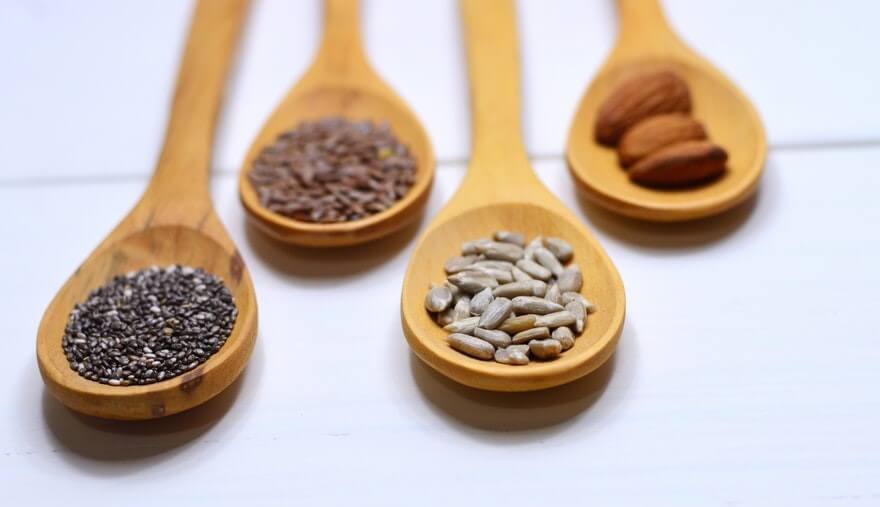
There are certain types of plant foods that dominate the top of the list:
- Seeds – Almost every type of seed that is commonly eaten (sesame, chia, flax, etc.) is in the top 30 vegan calcium sources. It”s easy to add these to salads and other meals to get a large portion of your daily calcium.
- Dark leafy greens are excellent sources of calcium – Spinach, swiss chard, collard greens, and kale all have a significant amount per serving, with very few calories.
- Nuts are an okay source of calcium – They mostly round out the list and have some calcium, but also a lot of calories. Almonds are the best nut in terms of calcium.
Oxalate and Calcium Absorption
Leafy greens are a good source of calcium, but they also have a lot of oxalate – an “antinutrient”.
Oxalate isn’t a terrible thing, but it does reduce the absorption of calcium (3). Additionally, people who are prone to kidney stones may need to watch their oxalate intake.
Note that this hindered absorption is already factored into RDAs, so you likely don’t need to stress about it.
If you’re concerned about this, cook your vegetables, which reduces oxalate content from 30 to 90% (4). Boiling in particular is the most effective, although you lose some other nutrients from the food as well.
Vegan Recipes High in Calcium
There are tons of plant-based meals that are packed with calcium, but I’ll get you started with a few of my favorites that aren’t too difficult to make.
Keep in mind that you can also just add chia seeds or sesame seeds to things like salads and likely get enough that way.
Soy Sesame Soba Noodle Bowl
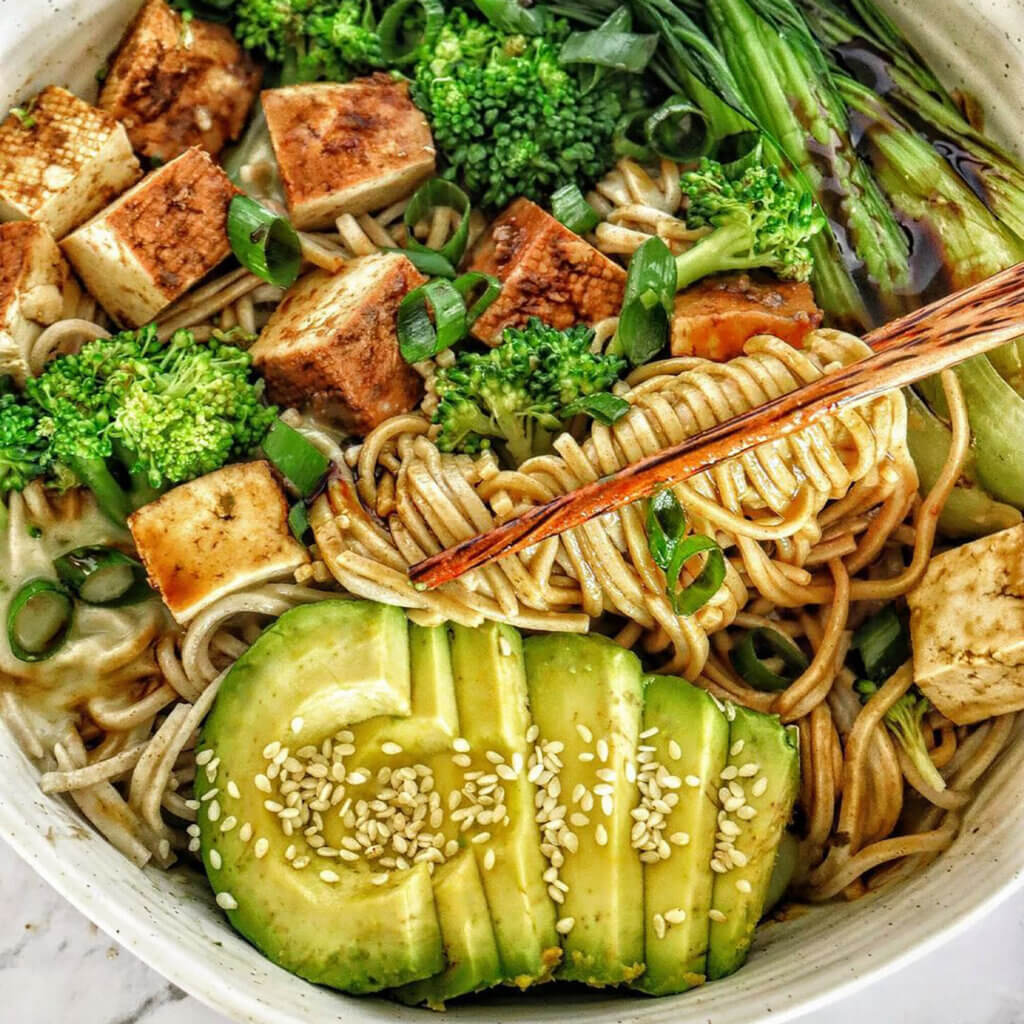
This is an awesome recipe that combines multiple plant-based sources of calcium and takes about 10 minutes to make.
When it comes to bean nutrition, soybeans have the most calcium by far, and soybean products like tofu retain most of that calcium.
On top of that, this bowl includes bok choy, but you can substitute in a leafy green that’s even higher in calcium like kale.
Finally, I add a bunch of sesame seeds on top. You can get close to your RDA of calcium with a single bowl of this.
Raw Power Protein Balls
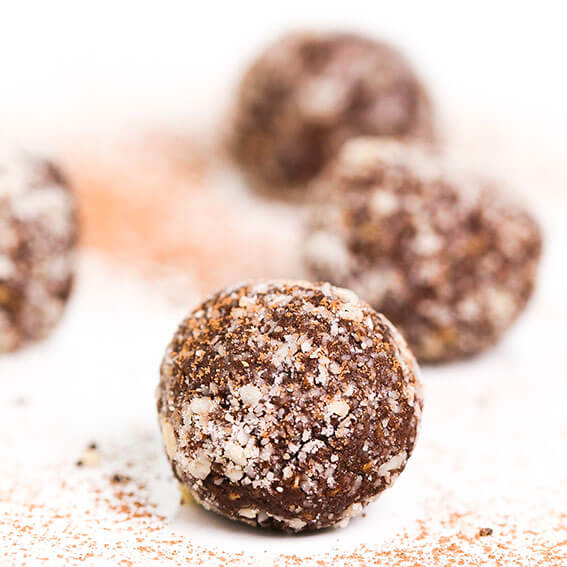
This might be my favorite snack, and it’s quite healthy too.
It combines multiple seeds – hemp, flax, and chia – along with almonds to make little protein balls that are packed with nutrients like calcium.
They’re quite easy to make, which is why I turn to them when I’m feeling too lazy to cook a full meal.
Kale, Black Bean & Avocado Burrito Bowl
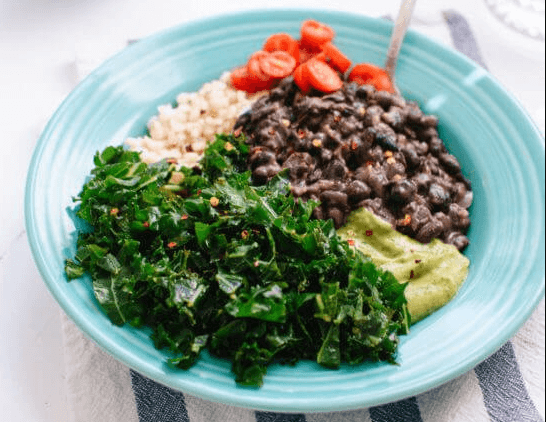
Most of the calcium in this dish comes from the kale, so add as much as you can.
Additionally, there is a bit of calcium in the black beans. This recipe does take a bit of time to put together, but tastes great and has a good amount of calcium.
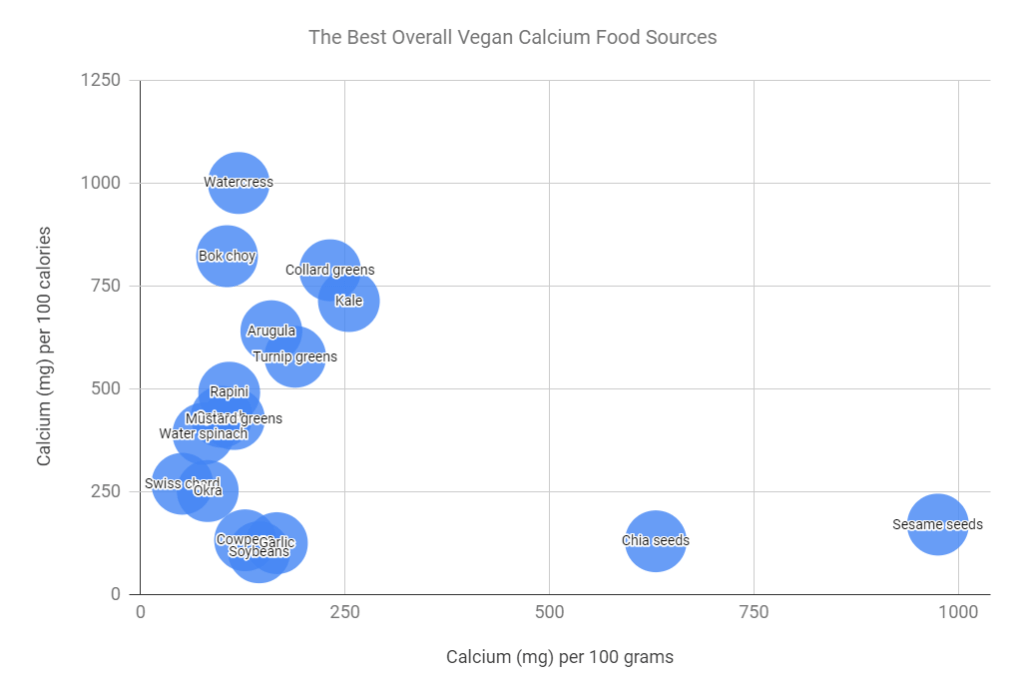

Spinach and swiss chard are high in oxalates, so while they might have a lot of calcium, very little of it can actually be absorbed.
Sure, but it only reduces the absorption, plus cooking removes a large portion of oxalate.